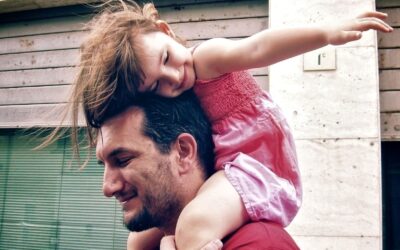Separation anxiety can be difficult for babies and parents. Learn to ease the transition of child care drop-offs.
Child care drop-off can be as anxiety-inducing for parents as it is for baby – sometimes even worse. Whether you’re fresh from maternity leave or a seasoned child care veteran dealing with a sudden bout of separation anxiety, no one needs more stress added to an already hectic morning routine. Add ease to your child care drop-off experience with the following suggestions on making a smooth transition.
The right choice
Having confidence in your choice of a child care provider can go a long way in easing the transition from home to child care. Of course, knowing that you can trust and respect your child care provider is essential, but also consider factors like proximity to work and methods of communication. Would you and baby both feel better if you could pop in on your lunch break? Would you be reassured if you could check a live stream or request a text message that baby has settled in comfortably, or is this more likely to prolong your anxiety and distract from your day? Be realistic about your needs, wants, and priorities.
Start slow
If you’re acclimating to a new child care situation, try to arrange a gradual transition. Attempt a trial run or a series of shorter visits, if possible. Arrange an introductory visit, so you and your baby or toddler have a better understanding of the environment, caregiver, and daily schedule. Secure your child care arrangement well before you need it so that you can get used to the idea.
Establish a routine
Try to avoid rushed mornings by being well-prepared for each day the evening before. Set out clothes for you and baby, pack your work bag and their diaper bag, have an idea about what’s for breakfast, and wake up early enough to spend some quiet quality time together. When you arrive at the child care provider, have a goodbye routine that you follow each morning so your child knows what to expect.
Home away from home
Your baby likely spends a significant portion of time with their child care provider – this is a good thing for familiarity. They will develop a bond with their caregiver that will eventually make the transition better for both of you. Leave a comfort item like a shirt or blanket with your scent on it or a miniature photo album for your baby or toddler to enjoy when they’re missing you.
Sharpen your acting skills
This one is tough, but you have to fake it until you make it. If you’re sad, anxious, or uncertain, your child will pick up on that and follow suit. Put on an Oscar-worthy performance of casual enthusiasm as you greet the provider and say goodbye to your child, and then leave in a quick and matter-of-fact way – even if you’re going to cry in the car.
Ask for advice
If your child is struggling with the drop-off transition, ask your child care provider for advice. They’re blessed with experience and an objective perspective, and know if your child is undergoing extreme duress or shuts off the tears and happily turns to toys the second the door closes behind you. Remember that you chose your caregiver with confidence; seek their guidance when and if you need it.
Being away from your baby can be hard – for both of you. The good news is that it gets better. Take solace in your choice of a caregiver and take pride in the fact that you’re exposing your baby to positive developmental opportunities while you work to provide for a better future for your family.
The Virginia Infant & Toddler Specialist Network helps improve the quality of care for infants and toddlers through extensive resources, services, and education for caregivers. Learn more about how we can help you improve the standard of care.




